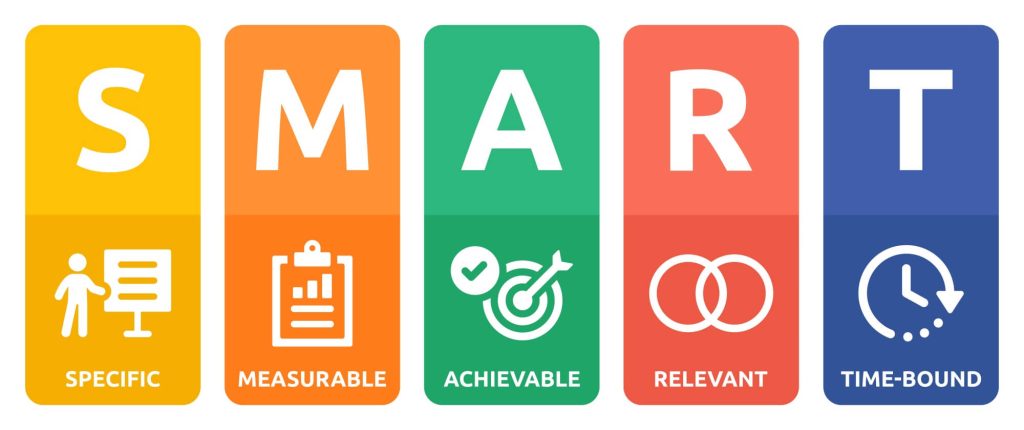How to Create an Effective Digital Marketing Budget for Your Business
Businesses have countless opportunities to connect with their audience in a rapidly evolving digital landscape. However, with these opportunities come challenges, especially when allocating resources such as digital marketing budget efficiently.
For established SMEs, especially those boasting multimillion-dollar annual revenues, crafting an adequate digital marketing budget is not just about numbers. It’s a strategic endeavor that balances ambition with pragmatism, ensuring every dollar spent invests in sustainable growth.
This guide delves into the intricacies of creating a budget that aligns with your business goals, resonates with your target audience, and positions you above the rest in the digital realm.
How Much Should Your Company Spend on Digital Marketing?
Determining the right amount to allocate for digital marketing can be complex, as it varies based on several factors. Let’s delve into current trends and insights:
- Overall Changes in Marketing Budgets: The CMO Survey from February 2022 indicates that marketing budgets were expected to rise by 10.3% in the subsequent 12 months. However, by September 2022, the growth was slowing down due to economic uncertainties like inflation and interest rate hikes.
- Digital vs. Traditional Marketing Spend: Digital marketing has consistently increased, with businesses shifting their budgets from traditional media like TV and radio to digital channels. In 2021, digital spending was projected to be more than double that of television. The emphasis is clear: if you’re not heavily investing in digital marketing, you risk falling behind.
- Percentage of Marketing Budget on Digital: The allocation for digital marketing varies across industries. For instance, sectors like Communications/Media, Consumer Services, and Technology allocate 90.0%, 86.7%, and 70.3% to digital channels. On average, B2B companies are slightly behind B2C in their digital spending, but the gap is narrowing.
- Factors Influencing Budget Allocation: Several elements influence how companies decide their marketing budgets. The nature of the business, competitive landscape, and customer behavior are essential determinants. For instance, branding, engagement, and performance marketing receive almost equal funding across industries. Offline marketing, like event marketing and sponsorships, still holds a significant portion of the budget.
- Effective Marketing Strategies: Email marketing remains top-performing due to its high ROI and relatively low cost. Other effective strategies include paid digital advertising on search and social media platforms, SEO, and content marketing. The platform’s user demographics and engagement metrics should influence the choice of social media channels for advertising. For instance, while Facebook and Instagram have a vast user base, platforms like TikTok and YouTube lead in average daily time spent.
- Budgeting by Industry: Marketing budget as a percentage of total revenue can vary significantly by industry. B2C product sectors allocate an average of 15.1% of their revenue to marketing, while B2B product sectors dedicate around 7.8%.
Crafting Your Digital Marketing Budget: A Strategic Blueprint
Creating a digital marketing budget requires combining art, science, intuition, and analytics. It’s about understanding your business goals, the digital channels at your disposal, and the behaviors of your target audience.
Before we delve into the step-by-step process, we must recognize that a digital marketing budget is not static.
It’s a dynamic tool that should evolve with market trends, business needs, and the ever-changing digital ecosystem.
Let’s embark on this journey to craft a budget that propels your business to new digital heights.
Step 1: Determine Your Goals & Audience
Understanding your goals and audience is the cornerstone of any successful digital marketing strategy. Even the most substantial budgets can yield minimal results without a clear direction and target.
The Buyer’s Journey
At its core, the buyer’s journey is the process customers go through to become aware of, consider and evaluate, and decide to purchase a new product or service.
This journey can be broadly categorized into three stages:
- Awareness: The potential customer realizes they have a problem or need.
- Consideration: They start researching and considering various solutions to their problem.
- Decision: They choose a solution and make a purchase.
Importance of Measurable Goals
Setting vague goals like “increase online presence” or “boost sales” can lead to scattered efforts and wasted resources.
Instead, goals should be SMART: Specific, Measurable, Achievable, Relevant, and Time-bound. Every marketing effort can be tracked, evaluated, and optimized for better results.
 Examples of SMART digital marketing goals:
Examples of SMART digital marketing goals:
- Increase Website Traffic: Aim for a 20% increase in organic website visitors over the next six months through SEO and content marketing strategies.
- Boost E-commerce Sales: Achieve a 15% rise in online sales in the next quarter by optimizing the website’s user experience and implementing targeted PPC campaigns.
- Enhance Email Engagement: Improve email open rates by 10% and click-through rates by 5% in the next two months by segmenting email lists and personalizing content.
- Expand Social Media Presence: Grow the company’s Instagram followers by 25% next year by consistently posting engaging content and collaborating with influencers in the industry.
Step 2: Decide Digital Marketing Channels
In the sphere of digital marketing, each channel represents a unique thread, weaving together to create a comprehensive picture of your brand’s online presence. While each channel has strengths, a holistic approach leveraging multiple channels often delivers the most impactful results.
Let’s delve deeper into each channel, understanding its nuances, associated costs, and strategic importance.
Search Engine Optimization (SEO)
Why and when to use it: SEO is the foundation for organic online visibility. It’s essential for businesses aiming for long-term growth and establishing authority in their domain.
SEO strategies are particularly beneficial when attracting consistent organic traffic without the recurring costs of paid ads.
Potential associated costs:
- Website management: This includes costs for hosting, domain renewals, and platform-specific charges.
- Link building: Investments in acquiring or earning high-quality backlinks from authoritative sources.
- Content creation: Expenses related to producing SEO-friendly content, including articles, infographics, and videos.
- Internal training & development: Investing in training sessions or courses for staff to stay updated on SEO best practices.
- Professional assistance: Hiring costs for SEO experts, consultants, or agencies.
Pay-Per-Click (PPC) Advertising
Why and when to use it: PPC offers immediate visibility and precise targeting, often on search engines. It is ideal for businesses launching time-sensitive campaigns, promoting specific products, or targeting niche audiences.
Potential associated costs:
- Ad spend: The primary budget allocated for the ads.
- Ad creation: Costs for designing visuals and crafting compelling ad copy.
- Professional assistance: Fees for PPC specialists or platforms to optimize campaigns.
Display Ads & Remarketing Campaigns
Why and when to use it: Display ads capture users’ attention through visuals on third-party websites.
Remarketing, conversely, targets users who have previously interacted with your brand, reminding them of their interest. These strategies are vital for brand recall and re-engaging potential customers.
Potential associated costs:
- Designing display ads
- Platform fees
- Software or tools for remarketing campaigns
- Professional assistance
Social Media Marketing
Why and when to use it: Social media platforms are hubs of engagement and interaction. They are essential for businesses aiming to build a community, enhance brand loyalty, or tap into younger demographics. Social media is a great brand awareness tool.
Your choice of platform (e.g., Facebook, Instagram, LinkedIn, TikTok) should align with your audience’s preferences and behaviors.
Potential associated costs:
- Content creation
- Platform-specific ad campaigns (including ad spend and ad creation)
- Social media management tools
- Potential influencer partnerships
- Professional assistance to manage social marketing campaigns
Email Marketing
Why and when to use it: Email marketing provides your audience with a direct line of communication to your business. It’s perfect for personalized promotions, newsletters, or updates. And it often boasts a high ROI.
Potential associated costs:
- Email marketing software
- Content creation
- Professional assistance to manage email marketing campaigns
Content Marketing
Why and when to use it: Content is the heart of all digital marketing. It provides a foundation for social media marketing, email marketing, PPC advertising, and more. Plus, it drives SEO and positions your brand as a thought leader.
Quality content educates, informs, and engages your audience, forming the basis for almost all digital strategies.
Potential associated costs:
- Content creation (articles, videos, podcasts)
- Promotion (ads, social sharing)
- Distribution platforms
- Content management systems (i.e. your website)
Step 3: Identify the Costs of Marketing Activities
Crafting a digital marketing budget isn’t just about allocating funds; it’s about understanding where each dollar goes and ensuring it’s spent wisely.
Identifying the costs of various marketing activities requires research, analysis, and sometimes trial and error.
Researching Costs:
- Competitor Research: You can gauge the industry standard for specific activities by analyzing your competitors’ performance. Tools like SEMrush or Ahrefs can provide insights into competitors’ ad spending, keyword targeting, and more.
- Google Ads Keyword Research: If you’re considering PPC advertising, Google Ads’ Keyword Planner can estimate the cost-per-click for specific keywords. This helps in budgeting for ad campaigns.
- Industry/Market Research: Industry reports, whitepapers, and surveys can offer benchmarks for marketing spending in your sector. For instance, a tech startup might have different budgetary constraints and priorities than a well-established retail brand.
Examples of Different Digital Marketing Activities Costs:
- Content Creation includes hiring freelance writers, graphic designers, or videographers. Costs vary based on expertise and content type.
- SEO: Costs include website optimization tools, backlink acquisition, and professional consultancy fees.
- PPC Advertising: Apart from the actual ad spend, you incur costs for ad design, landing page creation, and campaign management tools.
- Social Media Marketing: Costs range from organic content creation to paid ad campaigns. Investing in social media management tools or influencer partnerships can add to the budget.
- Email Marketing: While many platforms offer tiered pricing based on the number of subscribers, other costs can include template design, list segmentation tools, and A/B testing software.
The Experimental Nature of Marketing Costs
It’s essential to understand that while research can provide estimates, the actual cost of many marketing activities becomes clear only when you dive in.
For instance, an ad campaign’s success can influence its cost. A highly successful campaign might see increased competition, driving up costs. Conversely, refining targeting can reduce costs over time.
Moreover, the digital marketing landscape is dynamic. Platform algorithms change, new tools emerge, and audience behaviors evolve.
As such, costs aren’t static. Regularly reviewing and adjusting your budget based on performance data and market changes is essential.
While initial research lays the groundwork, real insights often come from action. Businesses can hone in on the most cost-effective strategies by testing, analyzing, and iterating, ensuring every dollar spent maximizes value.
Step 4: Create a Marketing Plan
A marketing plan is the blueprint for your digital marketing endeavors. It outlines your business objectives, strategies to achieve them, and the tactics you’ll employ.
Creating a comprehensive marketing plan ensures your efforts are aligned, cohesive, and geared towards achieving measurable results.
Understand Your Audience
Segment your target audience based on demographics, psychographics, behavior, and other relevant factors.
Create detailed buyer personas to understand their needs, preferences, and pain points. This will guide your content creation and targeting strategies.
Choose the Right Channels
Decide on the most effective digital marketing channels based on your audience analysis and objectives. This could include SEO, PPC, social media, email, and content marketing.
Allocate Budget
Determine how much you’ll spend on each channel and activity. This should be based on past performance (if available), industry benchmarks, and the potential ROI of each channel.
Develop a Content Strategy
Content is the backbone of digital marketing. Plan your content calendar, deciding on the type of content (blogs, videos, infographics), publishing frequency, and promotional strategies.
Plan Campaigns
For time-bound promotions or product launches, plan specific campaigns. This includes setting campaign objectives, choosing channels, creating content, and allocating budget.
Monitor and Analyze
Decide on the key performance indicators (KPIs) you’ll track. These could include website traffic, conversion rate, click-through rate, and more.
Use tools like Google Analytics, SEMrush, or HubSpot to monitor performance.
Stakeholder Communication
Ensure all relevant stakeholders, from your marketing team to top management, are informed about the plan.
Regular updates and reports will ensure everyone is aligned and aware of the progress.
Step 5: Estimate Your Budget
Estimating your digital marketing budget is critical in determining your marketing efforts’ scope and reach. It’s a delicate balance between your aim and the financial resources available.
Here’s a structured approach to help you craft a budget that aligns with your goals without overstretching your resources:
- Review Past Expenditures: If you’ve previously invested in digital marketing, analyze the returns from those investments. Understand which channels offered the best ROI, where you overspent, and where you could allocate more funds.
- Define Your Marketing Goals: Your budget should directly correlate with your objectives. If you aim for a 30% increase in online sales, your budget should reflect the strategies and channels that will help achieve this.
- Prioritize Marketing Channels: Not all marketing channels are created equal. Based on your target audience and business model, some channels offer better returns than others. Allocate more funds to high-performing channels.
- Allocate Funds for Each Activity: Break down your total budget into specific activities:
-
- Content Creation – Blogs, videos, infographics, podcasts
- Advertising – PPC, display ads, social media ads
- SEO – On-page, off-page, technical SEO
- Social Media – Organic posts, influencer partnerships
- Email Marketing – Campaigns, newsletters, automation tools
- Tools & Software Analytics – tools, marketing automation platforms, CRM systems
- Professional Services – Consultants, agencies, freelancers
Step 6: Measure the Results of Each Campaign
Measuring the results of your marketing campaigns is paramount to understanding their effectiveness and ensuring a good return on investment.
It’s not just about tracking numbers but about interpreting them to make informed decisions for future campaigns. Here’s how to go about it:
Set Clear KPIs (Key Performance Indicators)
Before launching any campaign, define what success looks like.
Whether that’s an increase in website traffic, a certain number of lead conversions, or a specific sales target, having clear KPIs will guide your measurement efforts.
Use Analytics Tools
Leverage tools like Google Analytics, Facebook Insights, or HubSpot to track and measure campaign performance. These tools provide a wealth of data, from user demographics to behavior patterns.
Track Conversion Rates
It’s not just about how many people saw your campaign but how many took your desired action from it.
Monitor conversion rates closely to track sign-ups for a newsletter, purchases, or downloads for an advertised resource.
Calculating ROI
Return on Investment (ROI) is a essential metric. You can determine this by dividing the net profit obtained from a campaign by its total cost and then multiplying that figure by 100. This gives you a percentage representing the campaign’s profitability.
Monitor Engagement Metrics
For channels like social media or email marketing, engagement metrics such as likes, shares, open rates, and click-through rates provide insights into how your audience interacts with your content.
Conduct A/B Testing
If you’re unsure which version of an ad or email will perform better, use A/B testing. This involves creating two versions and measuring which achieves better results, helping refine future campaigns.
Gather Qualitative Feedback
While quantitative data is essential, don’t overlook qualitative feedback. Surveys, feedback forms, or direct customer interactions can provide insights that numbers might miss.
Analyze Customer Acquisition Cost (CAC)
Determine how much it costs to acquire a new customer through each campaign. If the CAC is higher than the value a customer brings (Lifetime Value), you should rethink your strategy.
Monitor Customer Lifetime Value (CLV)
Understanding a customer’s long-term value can help assess your campaign’s long-term impact. A campaign that brings in customers with high CLV might be more valuable than one that results in one-time sales.
Step 7: Make Changes as Needed
In the dynamic world of digital marketing, adaptability is vital. The landscape is ever-evolving, with new trends, tools, and audience behaviors emerging regularly.
As such, a “set it and forget it” approach can lead to missed opportunities or dwindling returns. Here’s how to ensure your marketing efforts remain agile and responsive:
- Regularly Review Performance: Consistently monitor the performance metrics of your campaigns. If specific strategies aren’t delivering the expected results, it’s a clear sign that adjustments are needed.
- Stay Updated on Market Trends: Technological advancements, platform algorithm changes, and shifting consumer preferences influence the digital marketing realm. Regularly update your knowledge to ensure your strategies align with current best practices.
- Reallocate Budget: If one marketing channel outperforms others, consider redirecting funds to maximize its potential. Conversely, reduce spending on underperforming channels.
- Test New Strategies: Be bold and experiment. Testing allows you to discover what resonates best with your audience: a new ad format, a different content type, or a novel marketing platform.
- Optimize Ad Campaigns: Continuously optimize your campaigns for paid advertising. Adjust targeting parameters, refine ad creatives, or experiment with different bidding strategies to improve ROI.
Unlock Your Business’s Full Potential with Strategic Digital Marketing
In this digital age, crafting an adequate marketing budget is more than just allocating funds; it’s about strategically investing in avenues that drive tangible results.
From understanding your audience to measuring campaign outcomes, every step plays a pivotal role in ensuring your marketing efforts resonate with your target demographic.
As market dynamics shift and new trends emerge, the ability to adapt and refine your strategies becomes paramount. Remember, the journey continues once a campaign is launched.
Continuous monitoring, analysis, and optimization are the hallmarks of a successful digital marketing strategy.
If you want to elevate your digital marketing game and need expert guidance, consider partnering with a strategy consultant.
With professional expertise, you can navigate the complexities of the digital landscape, ensuring your marketing investments yield optimal returns and drive your business forward.
Suggested Reads:



